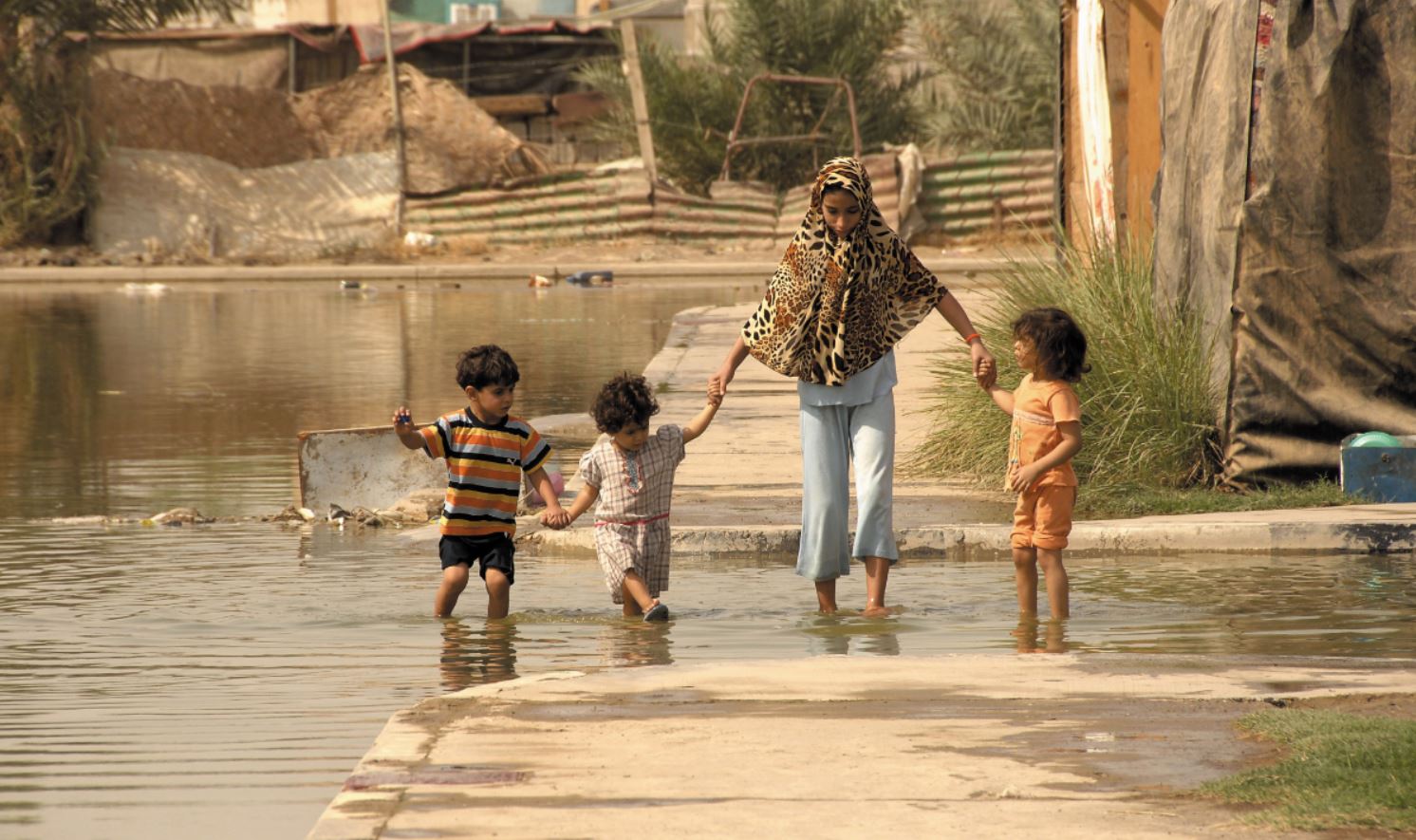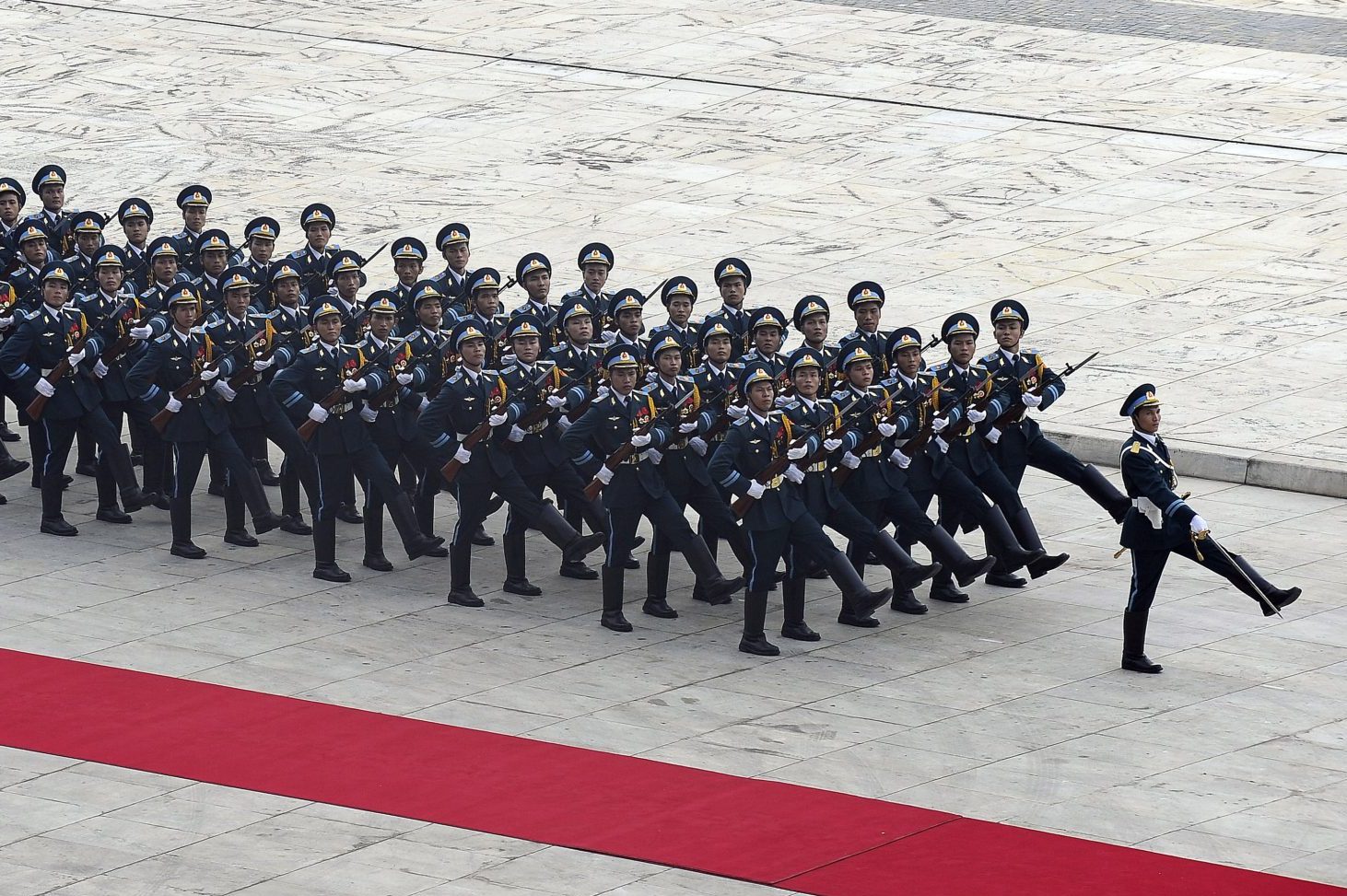For years, Iraq has suffered a water scarcity crisis that has been exacerbated by poor domestic governance, an uncooperative international framework, and transnational conflicts. Water scarcity, in turn, fosters a vicious cycle of slow economic growth in rural areas and social instability that contributes to weakening the Iraqi state. Breaking this vicious cycle is both a duty of and a unique opportunity for policy makers in Baghdad. In this period of dissatisfaction with Iraqi institutions, the government desperately needs to implement inclusive policies that improve the wellbeing of its citizens and create mobilization. Making a national water policy could serve as a catalyst in solving and mitigating other issues that plague the country, such as social unrest and poverty.
Iraq used to be the most water rich country in the Middle East and North African region. With a population of 33.42 million and 924 km2 of inland water, Iraq has two main rivers flowing in its territory, the Tigris and Euphrates. The rivers encircle the Mesopotamian plain, often called the “Garden of Eden” and generally referred as the cradle of Western civilization. Unfortunately, Mesopotamia is no longer a garden. The area, of which 20 % is in Iraqi territory, now lacks water resources. The Tigris, Euphrates, and Shat Alarab rivers’ discharge of water has been in decline; the first two are estimated to dry up in Iraqi soil by 2040.
The three rivers create a transboundary river system that is shared between Turkey, Iran, Syria, and Iraq. Iraq territory claims the largest area of the Tigris and Euphrates river basin. However, Iraq is in the weakest position since most of its water comes from upstream foreign countries (Turkey 71%, Iran 6.9% and Syria 4%) and only 8% comes from internal sources. Iraqi water dependency on its neighbors has been an issue since the 1970s when upstream countries started to build dams thereby limiting the flow of water into the country. Today, Iraq has a growing water deficit; the current demand of water is estimated between 75 to 81 billion cubic meters, yet the supply in 2015 was just 43 billion, in 2025 it is expected to be only 18 billion. Add the variable of population growth and it is hard to imagine the extent of the crisis if no action is taken.
Domestic water management in Iraq is in a state of failure. Water mismanagement in the country has a long history that goes from Saddam Hussein’s regime, to the occupation period, to the most recent Iraqi governments. In the 1980s, Iraq started a dam construction project aimed at controlling floods and creating water storage facilities. The project was never completed due to the outbreak of the Gulf War, however several dams were built, including the Saddam dam (Mosul dam), along with an inefficient network of canals and drains that disperse water to parts of the country that do not need it. Then, in 1991 after the Gulf War, Saddam started to drain the marshlands of the Mesopotamian region to move troops in the area and suppress a Shia uprising. The result of the drainage was a 90 percent reduction of the marsh area by the year 2000 and a displacement of 75,000 Marsh Arabs who mostly fled to Iran. Meanwhile, in the 1990s, sanctions imposed on Iraq caused further scarcity and degradation of water quality by reducing the budget Baghdad needed to build and manage its infrastructure. As a consequence, in 1999 only 41 % of the population had access to clean water, whereas in 1990 it was about 90 %.
Since the second Gulf War and the US occupation of Iraq, there have been both steps forward and backward. For instance, 70 % of the marsh area had been restored by 2007, however, it is drying up again due to the lack of water in the Tigris and Euphrates. The post-occupation figures also do not portray a positive outlook. One-third of the population remains without potable water, the efficiency of the distribution network is as low as 32 %, and 70 % of the sewage water is discharged untreated directly into rivers causing sewage related diseases. As if things were not bad enough, water salinity in the Mesopotamian region is often too high for irrigation. More than 45 % of Iraq is affected by desertification, sandstorms are disrupting agriculture, and rural people fleeing from arid provinces are accelerating an unsustainable process of urbanization.
The failure of the Iraqi state to provide basic services such as electricity, water, and sewerage has already contributed to the fall of one government and boosted social instability and unrest. Environmental degradation and human misery are largely the result of an unresponsive government that neglects the basic needs of its population. Unresponsiveness can cause dissatisfied citizens to turn to violence. The post-2014 situation has shown exactly how easy it was for the Islamic State to engage with a disfranchised segment of the rural Sunni population of Iraq.
Seen in this light, building a small irrigation damn or sanitizing a water basin would represent more than just water policy. For the central government, it would mean reconnecting with a part of its estranged population and the creation of agency with its citizens. If bad water management can aggravate social problems, good management can help solve them.
By Cesare M. Scartozzi
- NOVAsia Is Hiring: Call For Applications and Contributors for Spring 2025! - February 26, 2025
- NOVAsia Is Hiring: Call For Applications and Contributors for Fall 2024! - August 20, 2024
- NOVAsia Is Hiring: Call For Applications and Contributors! - February 19, 2024






